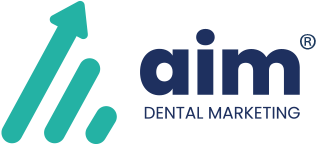Integrating Medical and Dental Data: More Than a Technical Challenge
This book is about integrating processes and data in medical and dental care. Doing so is a significant challenge in multiple respects: technically, logistically, professionally and culturally. Yet, succeeding at this endeavor is inescapable: As clinicians, we simply owe it to our patients (Baron 2011). We can only improve health if we improve oral and general health at the same time. The separation of dentistry from medicine is a historical accident. As Dr. Nash explains cogently in his preface, early on “treating teeth was simply a mechanical endeavor, as no relationship was thought to exist between the health of the teeth and that of the rest of the body.” Today, we know better. Plenty of studies have shown associations, if not causal relationships, between dental and medical conditions.
Informatics is key to helping healthcare professionals realize the vision articulated in this book. Separating dentistry and medicine has kept things apart that are central to informatics: data, information and processes. Dentists and physicians keep their own records for the same patients, encode patient information using different approaches and rarely communicate about patients. Doing so does not only result in inefficiencies and unnecessary overhead, but also impedes good clinical decision making and patient outcomes. Both may easily understand similar or identical portions of their respective records, such as the medical or medication history.
However, clinicians from either field are typically not able to understand information on forms they are not familiar with. For instance, most physicians cannot make sense of a tooth chart. Neither can most dentists given a set of medical laboratory tests. So, a crucial question in integrating medicine and dentistry more closely is: How should we communicate?
The answer to this question is primarily a professional and cultural, rather than a technical, one. Exchanging electronic data among dentists and physicians, while not trivial, is a comparatively small problem. To the computer, medical and dental information looks the same – it is just a stream of bits. For clinicians, exchanging information is more complicated. The main challenge is to communicate the information that the other party needs and to ensure that its meaning, as well as its implications, can be understood and acted upon. Pediatricians must understand that a diagnosis of early childhood caries requires, among other interventions, nutritional counseling. Dentists, on the other hand, must be familiar with the implications of a range of medical conditions on oral and dental health. Topics of mutual interest and relevance may be most easily understood and considered in dental or medical schools focused on a multidisciplinary, systems approach to patient care. However, such schools are the exception rather than the rule. For the “installed base” of 150,000 dentists and 300,000 physicians other approaches will have to be found.
The best care will be delivered by dentists and physicians together, not separately, as is the case right now. Opportunities to do so abound. Imagine the day when physicians, dentists and other healthcare providers deliver smoking cessation interventions through a seamless and transparent collaboration (McDaniel et al. 2009). Or, when dentists help identify patients with previously undiagnosed, significant medical conditions, such as hypertension, cardiovascular disease, diabetes mellitus, hepatitis and HIV infection (Greenberg et al. 2010). Or, when dentists screen for a whole host of medical conditions using saliva diagnostics (Spielmann and Wong 2011).
Foreshadowing the discussion in this book, we presented a conceptual approach for sharing health information among different clinical disciplines in a paper in 1994 (Schleyer and Eisner 1994). We first considered what information a clinician would need under various circumstances. For instance, in dental emergencies, recently updated medical information relevant to the diagnosis or treatment of the emergency would be useful. Conversely, a recent diagnosis of oral hairy leukoplakia would be of interest to a physician who is working up a patient for a potential infection with HIV. Our concept included the idea of “shareable data” contained in discipline-specific electronic patient records. What data are shared is not static, and depends on the patient, context, goal(s) and which types of clinicians are collaborating on the patient’s care. Currently, most clinicians obtain needed information from others through a written or verbal ad hoc consult. This is a cumbersome, error-prone and often slow process. In the electronic world, such information could flow much more easily, efficiently and automatically through the National Health Information Infrastructure or Health Information Exchanges, given appropriate safeguards for security and confidentiality. Standards such as the Continuing Care Record of the American Society of Testing and Materials, adapted to dentistry by the American Dental Association’s Standards Committee for Dental Informatics, have begun to address what information should be subject to exchange.
Current settings, which implement the exchange of medical and dental information among care providers are few and far between. Three examples are the U.S. Department of Veterans Affairs (VA), HealthPartners in Minnesota and the Marshfield Clinic in Wisconsin, described in this book. The electronic health records of these organizations include both medical and dental data, and provide partially integrated views of these data. Figure 6.3 in Chap . 6 shows a screenshot of Marshfield Clinic’s Cattails Dental System that displays information from a patient’s medical record in the lower left corner.

